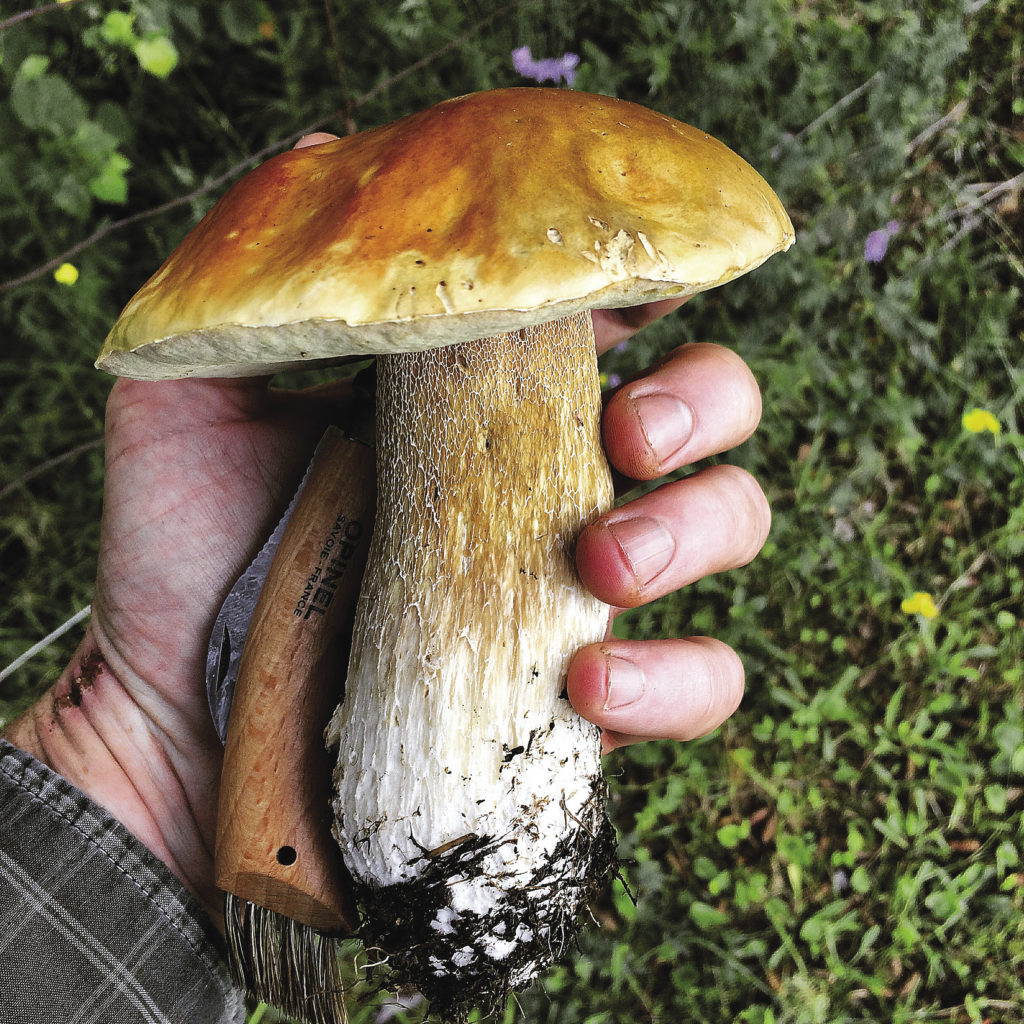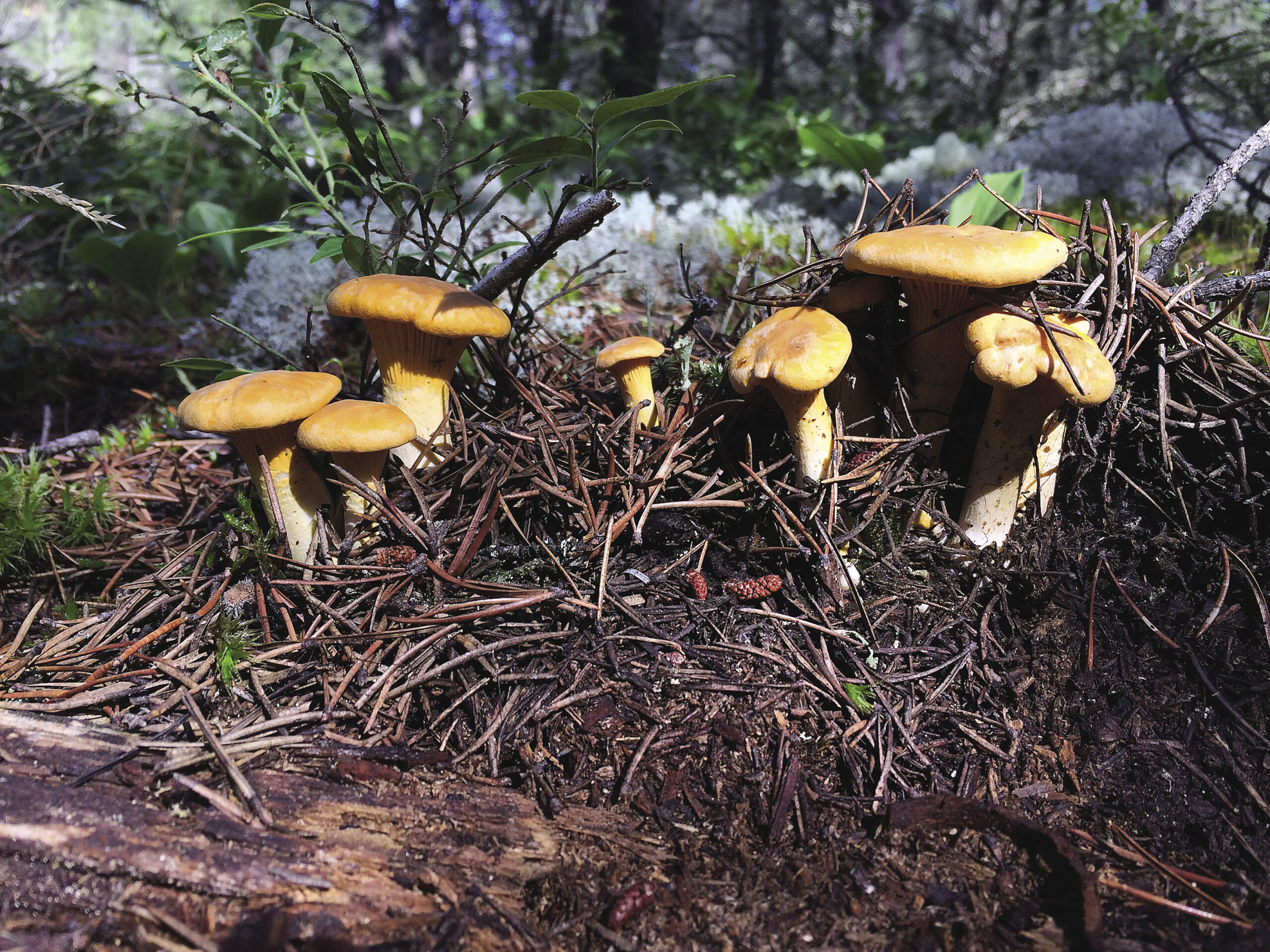Foraging for wild foods can be a useful tool to engage with the landscape, but with all its hype in today’s mainstream media—from Facebook groups on the Internet to celebrity chefs that specialize in wild game—ecological stewardship is a critical component to foraging best practices.
Before the mid-1990s, many Quebecers remember growing up eating foraged leeks. From the southern states to eastern Canada, there are entire festivals based around this bulbous, woodland ephemeral. Also known as ramps, these wild relatives of the onion gained a surge in popularity, filling tables at Quebec farmer’s markets and dinner plates at upscale restaurants—that is, until there were nearly none left.
In 1995, the province of Quebec made it illegal to sell wild leeks in an effort to conserve dwindling populations, brought to the brink by commercial over-harvesting.
For more on this issue, I spoke with a friend in southern Ontario. Chris Gilmour is a forager and co-owner of Wild Muskoka Botanicals, a producer of artisan wild foods and cocktail mixers. He lives on forested acreage with his wife and business partner, Laura Gilmour, outside of Huntsville, Ontario. With respective backgrounds in forestry and ecological consulting, they have a combined 12 years of experience interacting with the land for both work and play.
“We’re seeing a huge growth in the interest of [foraging], I mean our plant walks have waiting lists these days,” said Chris. But he takes caution. “With all the available information, a lot of the people going out are coming from urban areas or at least backgrounds that lack deep understanding of ecology, and how ecosystems function. As an organization, we see wild foraging as an amazing tool set for people to build that relationship and understanding, but it’s a path that people need to move along really slowly and intently as opposed to just getting really excited and diving in, because there is a lot to know to do it in a good way.”

Without that knowledge, it can be easy to impart poor harvesting techniques and practices—especially if wild foods are being gathered for markets or wholesale.
Chris recalls when he and Laura went to one of their favourite wild leek patches last year and came across an “absolute mess.”
“People were coming in and digging up huge patches of bulbs, cutting the tops off. The tops are totally edible, we actually only harvest the leek tops because you can actually do that in a completely sustainable way. And people were discarding the leek tops and leaving them there to rot, but they taste exactly the same as the bulbs. People were digging up the bulbs and leaving the soil exposed, which now leaves the mycorrhiza exposed in the soil, which is killing back fungi, which is made of organisms.”
Wild leeks or ramps aren’t as common along the North Shore, but the chaga mushroom is. Chris said he’s also witnessed signs of over-harvesting of this fungus, which can take decades to develop.
“People cutting into the tree to get every little bit of it. [They] probably just don’t know how slow-growing chaga actually is.”
In response to this knowledge gap, combined with a relatively unregulated niche food industry, Wild Muskoka Botanicals is promoting sustainable foraging practices through an online blog and a series of educational videos. Their first two-part video about wild leek harvesting can be found on YouTube.com—just search for Wild Muskoka. You can view their blog and more information at: wildmuskokabotanicals.ca.

If you’re itching to get out and forage food, here are a few points to help you and others enjoy wild foods for years to come:
- Go on a plant walk: You’re excited to get out into the woods and bring home delectable wild foods to your dinner plate, but it’s worth taking the time to do your research and seek out dialogue before jumping in. YouTube videos and Internet forums alone cannot replace the value of a trusted and knowledgeable guide. For intro foragers, plant walks are great ways to get out into the field with a credible expert to ask questions and identify edible plants correctly.
- Location, location, location: Be respectful of land owners and get permission to forage food on private land. If you’re on public land, make sure you’re aware of any ordinances or legislation for harvesting, because you may need a permit. Conservation areas and state/provincial parks should be off limits.
- Environment and habitat: Is the area a safe place to harvest from? Many plants are dynamic accumulators and gather toxins from the soil and store them in their leaves. Learn about the history of the land, including its past and present uses in the immediate and surrounding area. On that piece of land, how much traffic is there from other humans and animals? Are other people harvesting there, or is it just you? Consider that these foods provide sustenance for animals that share this habitat, too. “That’s going to change the way you harvest from that land,” said Chris, and may mean that the area should be left alone entirely.
- Know the ecology: Think about the life cycle of the plant. How does it propagate, how fast does it propagate, how rare is it, what part of the plant is being harvested?
- Tackle invasives: A great place to start is with invasive species. Garlic mustard is incredibly abundant, incredibly healthy, and you can harvest as much as you like.
- Roots vs. shoots: Wild foods are prized for different parts: roots, leaves, fruits or the entire plant. Some take years to reach maturity. A good place to start is harvesting leaves of things that grow in abundance.
- Know the look-alikes: Many plants and edibles, including mushrooms, have poisonous look-alikes. Some grow closely together or in the same habitat range. Chris recommends Peterson’s Field Guide to Venomous Animals and Poisonous Plants. “Don’t go foraging without that one.” And be sure to reference at least two field guides and consult an expert to confirm a plant or mushroom’s identity.
- Eat the weeds: Many unwanted plants are edible and turn up in backyard gardens. Purslane, chickweed, dandelion and lamb’s quarters are all common wild greens in the garden that are entirely edible and have useful medicinal properties. John Kallas’ book, Edible Wild Plants, offers recipes and cooking techniques for these nutritious greens.
- Give back: There are ways that you can implement stewardship practices. Chris and Laura help to propagate wild leeks by digging up a clump of bulbs and planting them in a different area. “Some of the new places where we harvest from actually have more leeks than where we started harvesting,” said Chris. Similar practices can be done with other plants.
- Be humble: Remember, having some experience with a wild edible doesn’t make you an expert. “I frequently see people go and take a plant walk and then start teaching other people, and harvesting stuff and bringing it to places to share with very little knowledge,” said Chris. Bear in mind that there’s a big responsibility in teaching others about wild plants and mushrooms. “If someone makes a mistake and gets sick, that’s your responsibility because you opened that door for them,” he cautions.
So take your time foraging, go slow and harvest just enough to enjoy wild foods with your friends and family.


